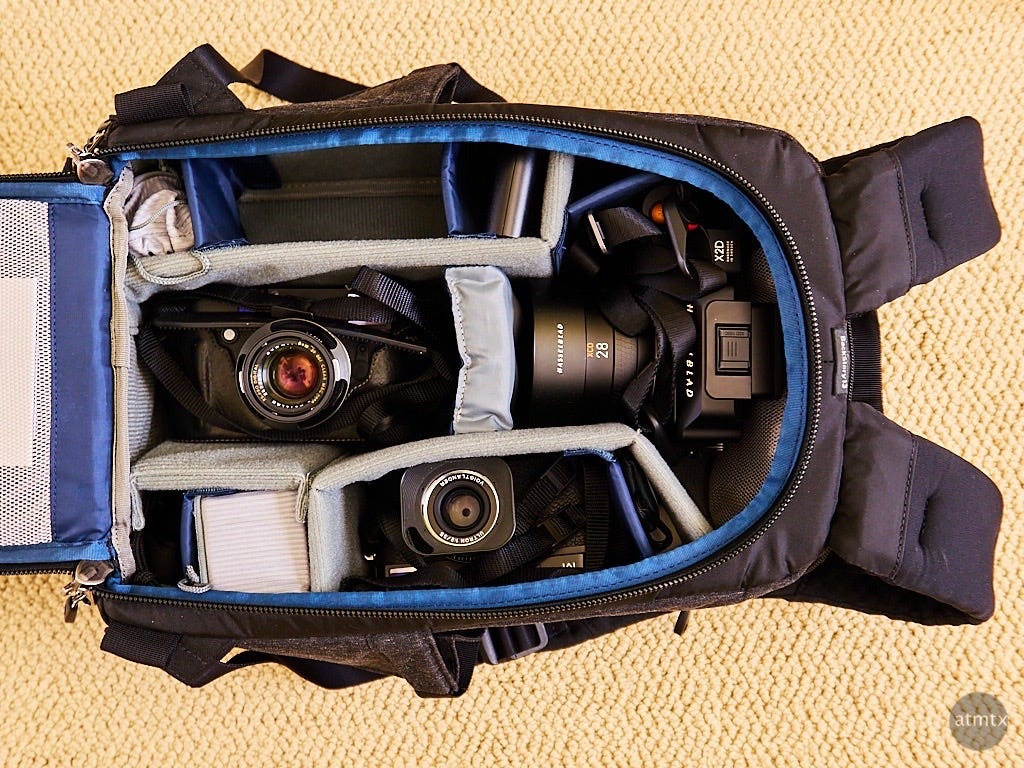The four cameras I brought on my month-long trip to Japan
A camera for every shooting situation and mood
I arrived in Japan two days ago, having safely reached the Osaka/Kyoto area. I’ll be visiting several different cities, and since Japan is a generally safe country, I felt no restrictions on bringing more cameras than I probably should. The only limitation was that everything had to fit inside the ThinkTank BackStory 13, which I was told by Precision Camera is the largest backpack that would officially fit underneath a plane seat. Coupled with my roller board for clothing, I don’t need to check anything in. Including the 11” iPad Pro and keyboard and a few extra accessories, the entire backpack weighed in at 15 pounds.
Gear selection is usually my biggest pre-trip challenge as I try to determine the optimal gear to bring. I’ve been using a barbell strategy for gear selection, which I’ll talk about in a future post.
My smallest, take-anywhere camera is the Leica D-Lux 8, which is perfect for low-key shooting in most places. It also serves as the perfect snapshot camera. Attaching the separate flash that comes with the camera, the leaf shutter works great for taming harsh shadows during the day and for low-light snapshots in restaurants. The camera features a built-in lens with a 24-75mm equivalent focal length.
At the opposite end of the camera spectrum is the Hasselblad X2D 100C, a 100MP cropped medium-format camera ideal for capturing high-resolution architecture. I only own one lens, the Hasselblad 28P. I’ll use this camera selectively. Its remarkable in-body image stabilization allows me to shoot it in low-light hand-held, even with a f4 lens.
The first two cameras were a given and something I easily decided on a while ago. I also wanted to bring a Leica M for that tactile manual focus experience. I’ve been shooting recently with my M9 and M 240. Although the M 240 is a generation newer and is more capable in almost every technical dimension, I like the M9 better. It offers a more tactile, primitive, and retro feeling. I also prefer the look of the CCD sensor. However, a recent purchase changed the calculus.
I took delivery of another M, which I haven’t mentioned yet in my monthly magazine. Given the uncertainty of the tariff situation and the limited availability, I snapped up a Leica M 246 from the Leica Store Miami. Its unique feature is the monochrome-only sensor. Leica has four models of the monochrome; the M 246 is the second version released in 2015.
Since the M 246 shares the same battery (and, of course, the same lens mount) as the M 240, I opted to bring both instead of the M9. Practically overrode my preference for the M9. Coupled with both cameras are the Leica 50mm f2 and the Voigtlander Ultron 35mm f2 lenses.
Pictured above is the backpack, complete with all the necessary accessories, including the requisite chargers. The one open compartment is for the D-Lux 8, which I used to take the picture. Luckily, I didn’t need any long lenses; I opted for the middle range of focal lengths for travel, street, and architectural photography.
I’ll let you know how this equipment selection works out as I report from Japan.




